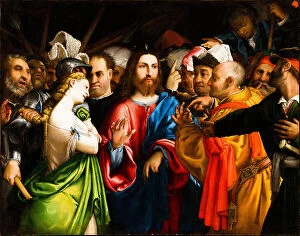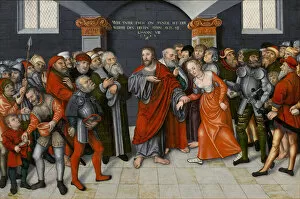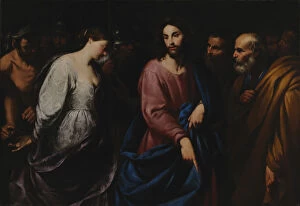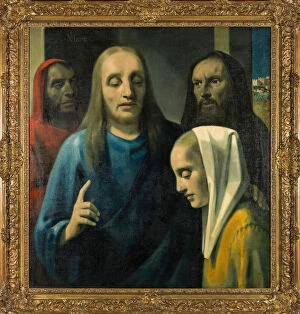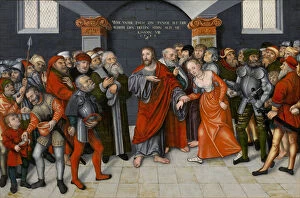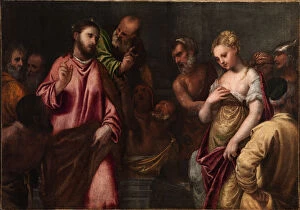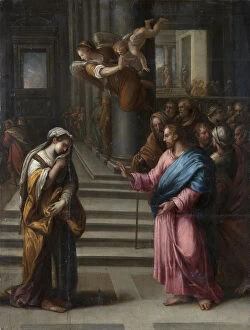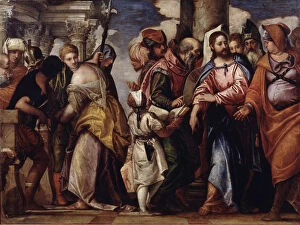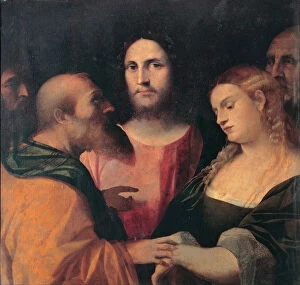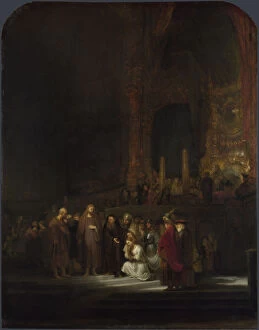Pericope Adulterae Collection
"Pericope Adulterae: A Captivating Biblical Scene Depicted by Masters of Art" The story of "Christ and the Woman Taken in Adultery, " also known as "Pericope Adulterae
For sale as Licensed Images
Choose your image, Select your licence and Download the media
"Pericope Adulterae: A Captivating Biblical Scene Depicted by Masters of Art" The story of "Christ and the Woman Taken in Adultery, " also known as "Pericope Adulterae, " has been a subject that has captivated artists throughout history. This powerful biblical narrative, found in the Gospel of John, tells the tale of a woman caught in adultery who is brought before Jesus for judgment. One notable rendition of this scene was created by Andrea Vaccaro around 1630. His painting portrays Christ's compassion and forgiveness towards the accused woman, emphasizing his message of love and redemption. Another renowned artist who depicted this poignant moment was Titian, whose version showcases his mastery of color and composition. With his characteristic use of rich hues and dramatic lighting, Titian captures both the tension between accusers and Jesus' calm authority. In 1937, an anonymous artist presented their interpretation titled "The Woman Taken in Adultery. " This modern take on the ancient story reflects societal shifts while maintaining its timeless moral lesson about mercy and understanding. Lucas Cranach the Elder's portrayal from 1549 emphasizes Christ's role as a divine judge dispensing justice tempered with compassion. The delicate brushwork adds to its emotional impact. Similarly, Jacopo Palma il Vecchio's work from 1525-1528 evokes empathy through subtle gestures and expressions. It serves as a reminder that even amid sinfulness, there is always room for repentance and forgiveness. Giambattista Tiepolo's rendition demonstrates his skillful command over space; he creates depth within his canvas to draw viewers into this intimate encounter between Christ and the adulterous woman. Paolo Veronese brings grandeur to this scene with elaborate costumes and architectural details typical of Renaissance artistry. His depiction conveys a sense of awe at witnessing such profound grace bestowed upon one deemed unworthy.

